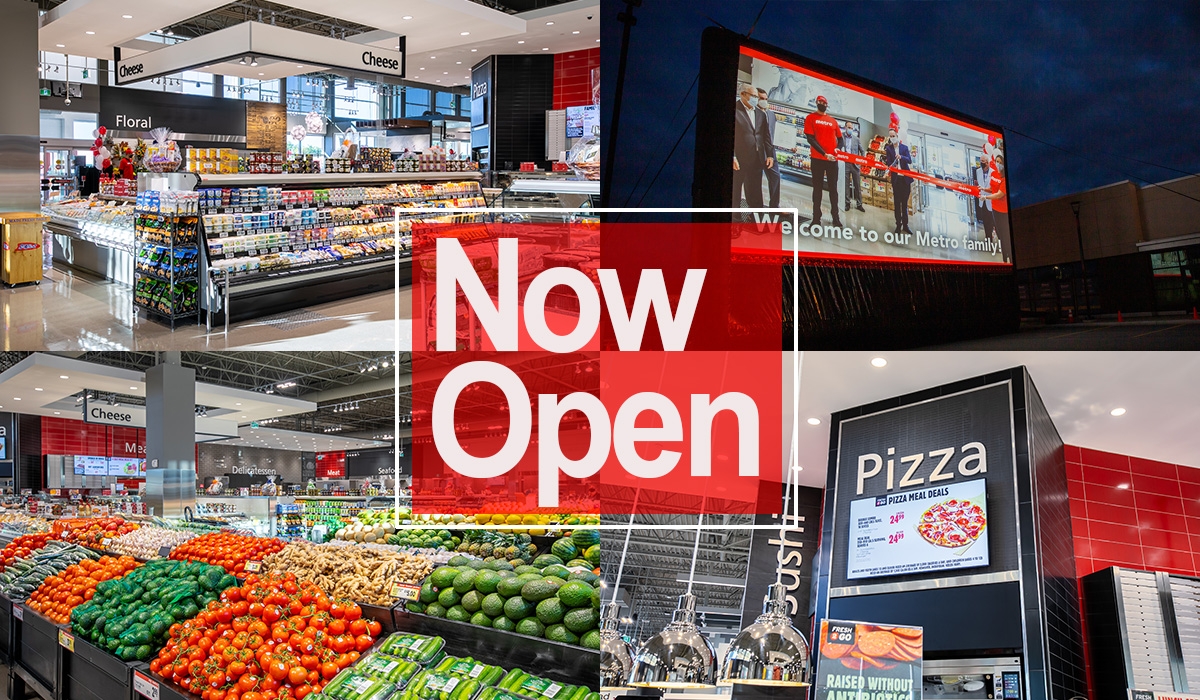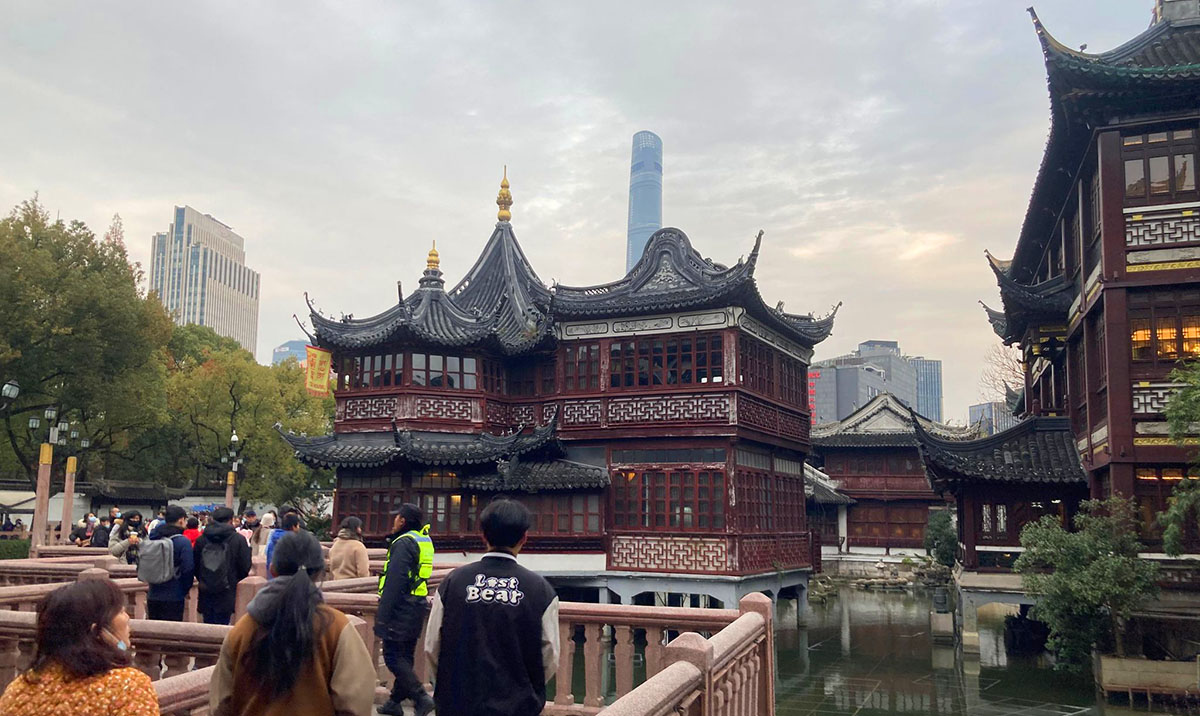
Exploring the Yangtze Golden Belt: China’s Economy on Display
Since the beginning of the COVID-19 pandemic in 2020, there has been a seismic shift in how Western countries view China. Many portray the country as closed off to the world and at the precipice of an economic downturn. Anecdotally, Western countries could make this case with the icing over of foreign relations between China and the West; however, the Xi Jinping era China is a different beast entirely.
The Canada China Business Council recently invited Ottawa Life Magazine and other Canadian media to look first-hand at the economic developments in the country. The focus was on the main financial area, the Yangtze Belt, extending from Beijing through Nanjing, Hangzhou, and Shanghai. Over eight days, we saw Chinese innovation and how Canadian businesses partake in commerce in the world’s second-biggest economy.
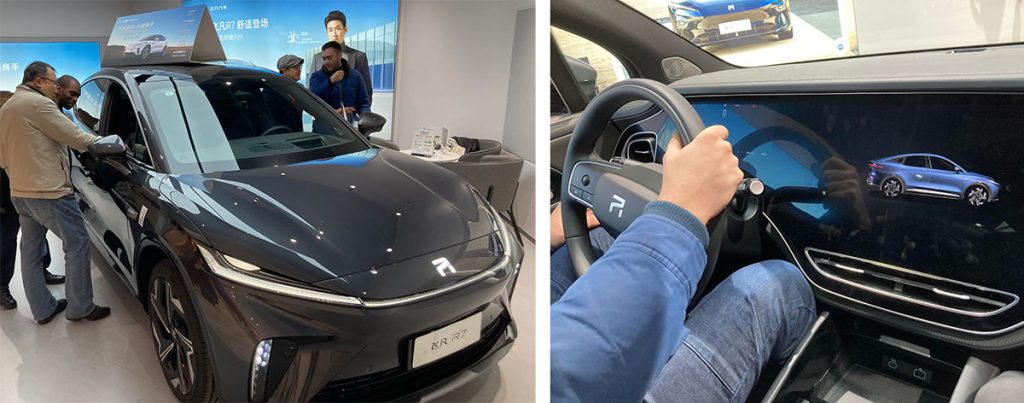
ABOVE: Domestically produced electric cars like the R7 by RA outsell their North American competition.
Upon arrival in Beijing, a Canadian will first notice that there are few foreigners in the capital, at least not from Western countries. If you see a Caucasian in Beijing, they’re likely Russian. Leaving and heading into the capital city, the transport infrastructure is immense, and Beijing seemingly goes on forever. Despite its enormous size, Beijing is an extremely quiet city.
The futuristic buildings in the city’s financial district give the aura of a science fiction movie set in an automized future, yet there is almost no sound. The reason is simple: electric cars and electric scooters reign supreme on the streets. Unlike in North America, there are surprisingly few Teslas since domestic production of e-vehicles reigns supreme. With this observation, a trend of analogous comparisons began that are impossible not to make, noticing similarities with extreme differences.
Aside from the futurism, another thing that is noticeable almost immediately is the amount of domestic tourism in Beijing. Chinese citizens flock to Beijing to see the historical sites and cultural attractions; the city is very much at the heart of the Han Chinese national identity. It’s virtually impossible not to walk through a tourist district packed with presumably middle-class Chinese nationals looking to spend and explore: the economy in Beijing does not appear to have slowed down.
American tech giant Uber is not a factor in China; neither is Google or Amazon. It’s not because there’s a lack of demand for these consumer services, far from it. Instead, there’s nativism in their consumerism, either because Chinese customs are different or a Chinese company did it first and continues to be better at it. A case in point is JD.com., a name likely unfamiliar to most people in the West. The company has essentially taken the role of China’s Amazon Prime service and more.
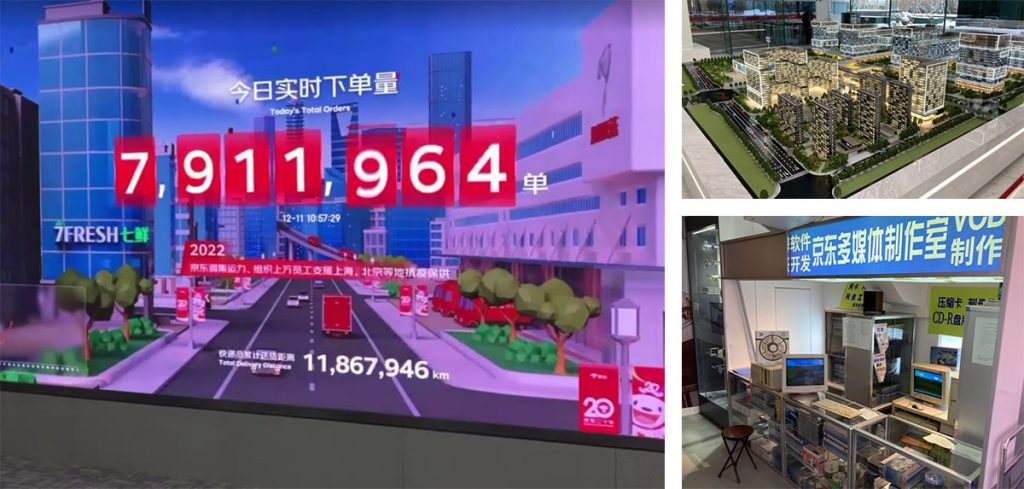
ABOVE: A large screen in JD.com’s headquarters displays the tally of daily total sales. The image above was taken at 10:00 a.m. (RIGHT) An architectural rendering of the massive JD.com complex in Beijing. A reconstruction of an original JD.com storefront shows the company’s humble beginnings.
Headquartered in Beijing, the company is proud to show off its very modest beginnings as a DVD and VCD shop. Now, it’s more akin to an empire. JD has warehouses everywhere in China and an army of 600,000 employees across 1,600 warehouses. Spearheading into e-commerce due to the 2003 SARS pandemic, JD.com stomped Amazon out of the market by offering only authentic and never fake products. They also require all employees to listen to eight hours of customer service calls a year to ensure each employee knows who they are serving. JD is also a leader in technological innovation, including using dark warehouses to save on electricity costs. Their factories are all automated, and since robots do not need lights to work, the energy costs of running a site are drastically lowered. JD.com’s delivery service is so efficient third parties hire it, while they’ve also taken a foray into health with a medical booking site that gets patients in touch with medical professionals.
JD also has a view towards social responsibility. In 2008, when earthquakes devastated Sichuan province, founder Liu Qiangdong drove around the province handing out supplies in a jeep and has since put provisions in place so that warehouses can disperse supplies for free to residents of any area impacted by the disaster. For Canadian businesses, JD.com also has an interesting concept: national suites — better described as ‘national sections’ on the website. These webpages display and market high-demand or up-and-coming products attached to their country of manufacture. Canada’s national suite continues to expand with high-demand products, including ice wines, Canada Goose jackets, Canadian maple syrup, and whiskies.
Internet business doesn’t stop at high-volume fulfilment shopping, though. The Chinese e-commerce market is home to a much more interactive form of marketing — live streaming. In North America, this concept is mainly associated with gamers on the platform Twitch, but in China, live-streaming influencers garner huge product sales by showing off products for a couple of minutes at a time while viewers can ask live questions over chat. Influencers like Austin Li, known as the Lipstick King, sell millions of units in mere minutes. Streamers are incentivized to watch not only for the entertainment value of the streams but also for deals like coupon codes that appear exclusively for viewers.
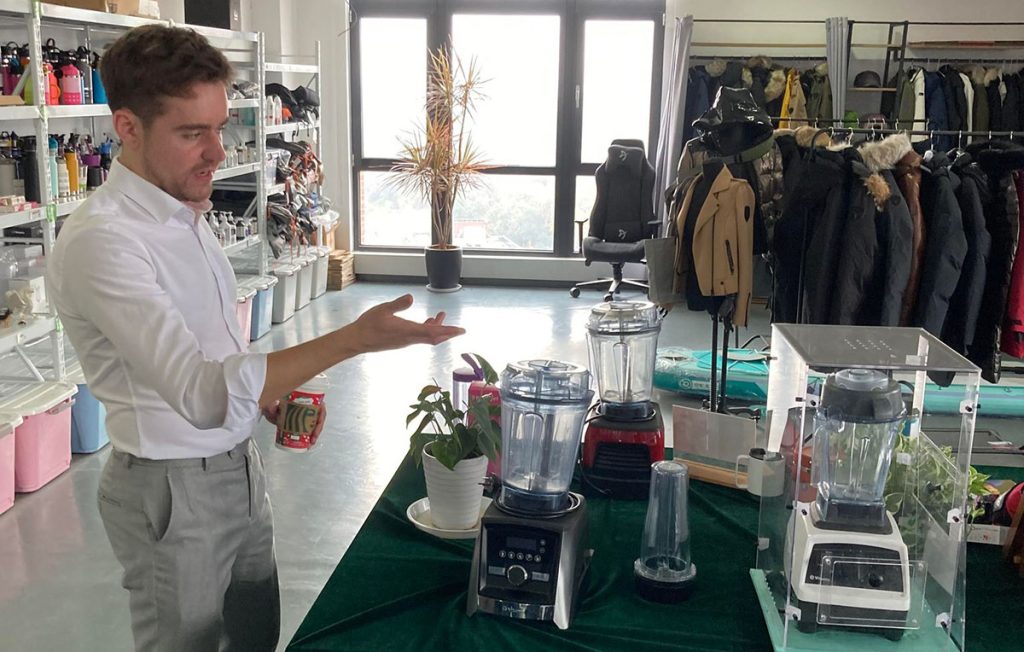
ABOVE: Products at WPIC Marketing + Technologies await a promotional push that will likely sell millions of units for each.
In Nanjing, a leader in live-streaming sales is WPIC Marketing + Technologies. Originally started to promote Western brands and businesses looking to break into the Asian market, the company, founded by Canadian brothers Jacob and Joseph Cooke, now has offices across the continent. Clearly, the live-streaming trend has become lucrative; influencers are often paid millions of Chinese yuan for a brief mention of a product. The trade-off potential is so high that brands as big as Levi’s, Canada Goose, Arc’Teryx and Yeti, among others, use WPIC’s services. The company is furthering business ties between the East and the West by leading from the front in the Chinese market and using domestic Chinese marketing practices to help push brands more commonly found in North American markets.
In Hangzhou, China’s economy looks to be a powerhouse of iron, steel, and modern technology that even the most ardent capitalists like Ayn Rand would be amazed by. Perhaps the best example of this newly found economic power is Hangcha Group Co., which manufactures warehouse vehicles ranging from electronic pump jacks to its feature product, the forklift, and even airport vehicles. Hangcha began distributing its products in Canada in 2019 and is leading the switch in China from combustion gas-powered utility vehicles to lithium-ion battery-driven vehicles.
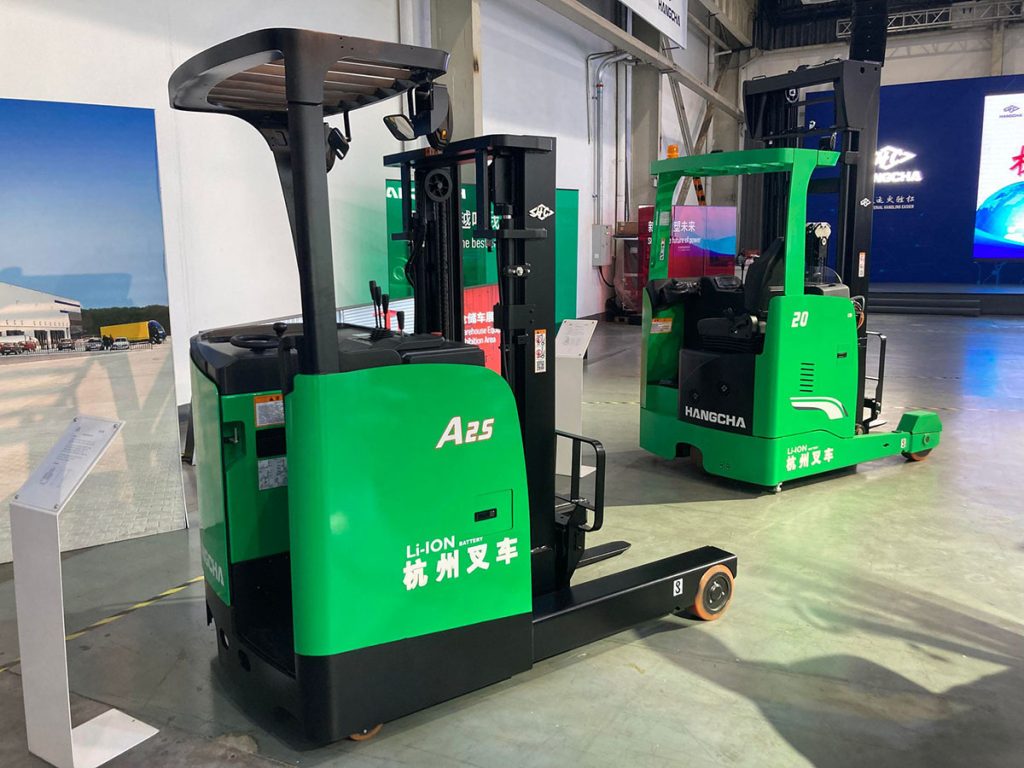
ABOVE: Hangcha has been manufacturing forklifts since 1974. Their lithium-ion models are sold worldwide.
Hangcha currently produces 400,000 units a year domestically and exports them through 300 dealers to 180 countries. At any time, 500 vehicles are in stock and ready to ship from their Canadian location. Although a new player in the market, it’s clear that the company knows what it’s doing. The quality is ISO9000 certified, and the machines appear space-like compared to the average forklift used at a Costco or Home Depot in North America. Hangcha’s Canadian sales rep says the company currently corners 10 percent of the national market with strong growth projections. Hangcha’s clients include the City of Ottawa, which recently bought a pallet jack. Reviews of Hangcha forklifts show their new lithium Ion models are easy to use and require very little maintenance compared to other models that run on conventional combustion engines.
Tuya Smart is another example of China’s modern economy in the Hangzhou region. Founded in 2014, the company has become a global leader in AI and smart technologies. Tuya creates the software and hardware for thousands of products ranging from air fryers to air conditioners and couches. Countless products can be voice-controlled through Tuya systems. The company shows off just how much you can control your life with its devices through its model apartment at its headquarters, where everything you look at can be voice controlled from the elevation of your legs on your couch through to the lowering or raising on a laundry rack on the patio, to the washer and dryer, to the hair dryer in the washroom. The feeling of living on a set reminiscent of the Jetsons came to mind, minus the flying cars.
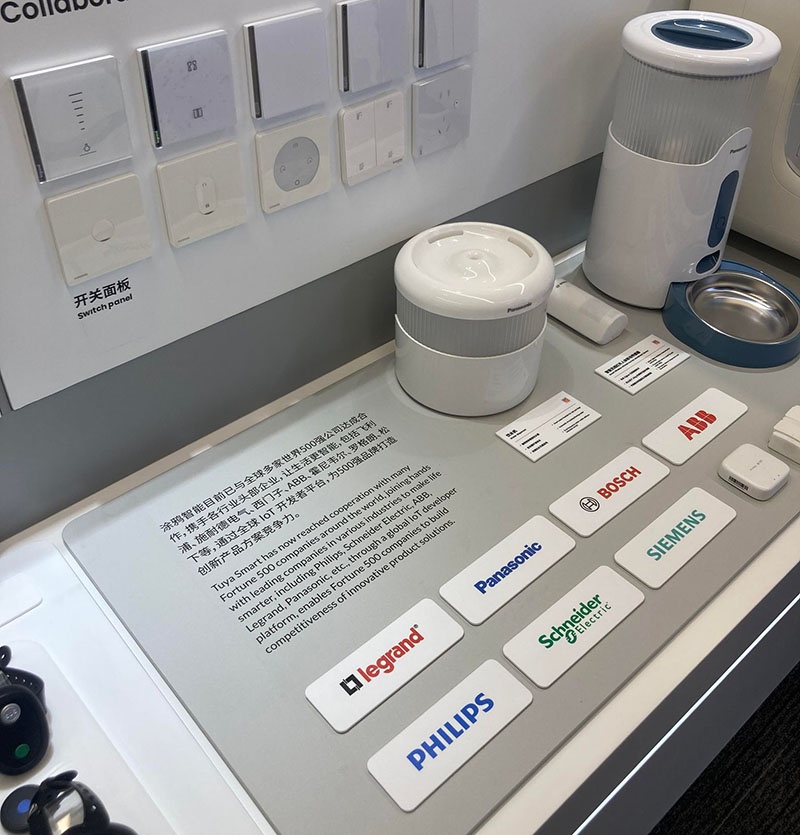
ABOVE: A few of the Fortune 500 companies that collaborate with Tuya Smart.
Tuya Smart provides intelligent IT solutions for other companies’ products. It has cracked into the North American market handily, with its products featured in the catalogues of major North American retailers like Home Depot, Canadian Tire, and Wal-Mart. There were initial privacy data harvesting concerns with Tuya Smart, but company executives were astute and insisted all customer data be stored locally in the customer’s home country, not in one central hub inside China. Tuya takes great pride in its IT solutions, receiving a stamp of approval from the United States Department of Homeland Security.
Defining the business centre of China is Shanghai; the incredibly Western-feeling city is probably known better than any other in China for its Bund district area along the banks of the Huangpu River shows the new cutting-edge skyscrapers next to the colonial-era buildings of the early 20th century when Western Europe dominated in trade and culture in the metropolitan. Shanghai is China’s most populous city, with 26 million inhabitants, making it the world’s third most populous.
Canadian companies are not shying away from investment in this megacity that is so large it’s almost beyond comprehension. Perhaps one of the most Canadian of all Canadian businesses when it comes to projecting national identity is Tim Hortons, known simply as Tims in China. The company is vast and shows potential for far more growth. The Chinese coffee market is still developing, with tea being the preferred drink, but palates are changing. Tims plans to have 2,750 stores in the country by 2026, and Canadian identity is at the core of the product. Point and case, the employee uniform consists of the stereotypical red and black flannel shirt. Other funny Canadianisms include door handles that look like hockey sticks.

ABOVE: It’s not the doughnut that reigns supreme at Tim’s in China; it’s the bagel.
CFO Dong Li sat down with the visiting journalists to discuss Tim Hortons China’s operations. While some menu items overlap, like the coffee beans and the wraps and sandwiches available on the menu, the coffee menu has more unique flavours. In China, consumers can enjoy everything from cheesecake coffee to holiday specials like mulled wine. Don’t bother looking for doughnuts, though; according to Dong, doughnuts are seen as the unhealthy carb bomb they are, and Chinese consumers aren’t interested.
However, they crave a slightly modified Timbit with less sugar, more akin to a fried bread ball than a doughnut hole, but they are still tasty. Tim’s China is also known for its bagels. Interestingly, besides being a coffee shop chain, there isn’t much overlap with its Canadian cousin. The brand sells the image of being Canadian, and Chinese consumers are eating or drinking it up.
Shanghai is huge and architecturally cutting edge; one company from Canada that has played a hand in this development is Brookfield Asset Management, which is focused on alternative asset management. Their subsidiary Brookfield Properties owns everything from nuclear power plants to shopping malls across China. The latter is a fascinating insight into Chinese high-class consumerism.
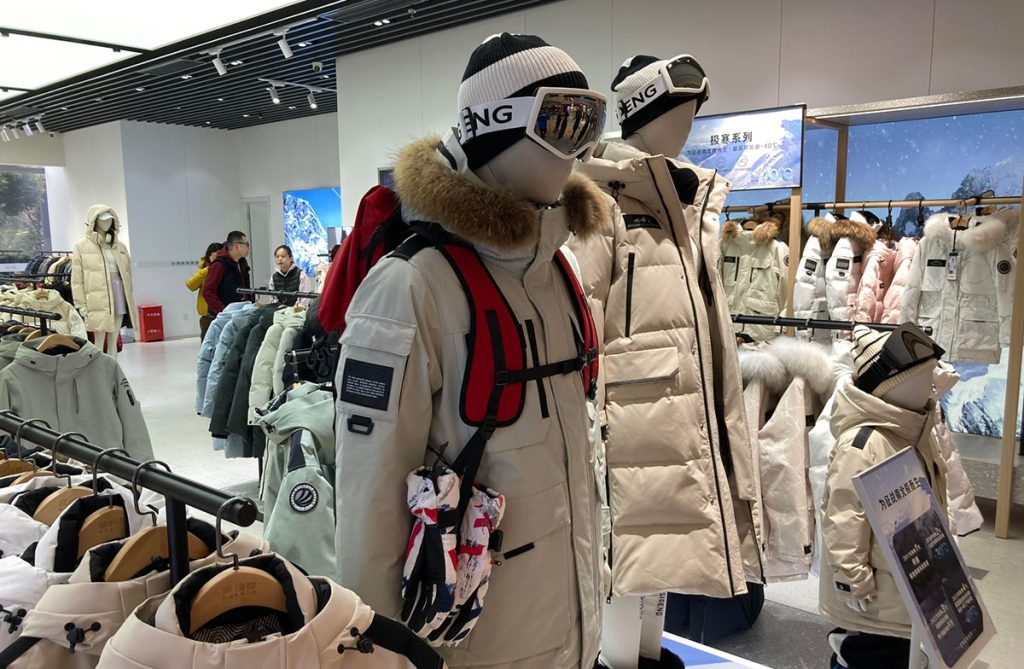
ABOVE: Canada Goose-like winter wear on sale for Chinese consumers.
No expense was spared in the Brookfield-owned mall, which includes an entertainment arcade area, a food court, and a movie theatre. Most interesting are the boutique-like stores that emulate brands like Louis Vuitton, Canada Goose, and Patagonia, but the products are Chinese-made and sold domestically as competitors, not knockoffs. Chinese consumer product quality has developed so rapidly that the stereotype of cheap plastic trinkets you buy at Walmart is a distant memory here.
After a week of touring some highlights of the New Chinese economy as a Westerner, several things became palpably clear. The first is that despite the socialist system, the Chinese government wants to foster business in the country, not block it. Anything that can benefit the economy is done with the utmost speed. Asking our guide how long it would take to build the very impressive eight-platform Nanjing Rail station, he remarked, “No more than a year and a half,” suggesting that when the party backs something, it gets done as soon as possible.
While an icy draft has blown over relations between the East and West, China’s economy has slowed. However, with three percent growth, it’s far from shrinking. Canadian companies continue to find that China’s domestic market is massive, wealthier than ever before, and unlike in the West, expanding, leaving more room for capital gain than in North America.
There is a definitive wealth gap in China, as witnessed on high-speed train rides between major economic centres, but the Chinese middle class continues to grow. After a week in the country’s business centres, it is abundantly clear that unless the West can unlock its economic competitiveness again, the future belongs to China, not the United States and other Western liberal capitalist societies.
Perhaps most telling, one of our guides from the Ministry of Foreign Affairs spoke to the Chinese economic situation, saying that when business is involved, the government’s priority is to get out of the way and ensure that economic growth can be fostered.
Looking at the Chinese transformation objectively, one cannot help but see a phenomenon almost unheard of in history, with only the bounding back of Germany after the Second World War or Japan’s economic transformation coming to mind as comparable.
Under Chairman Mao China, the Chinese economy was dragged back under the auspices of a “Great Leap Forward” that was supposed to bring the country into the modern era after the tumultuous civil war. The modern Chinese state only began serious economic development under the tenure of paramount leader Deng Xiaoping and his policy of Socialism with Chinese Characteristics that opened China up to global markets.
In fewer than 45 years, China has gone from an agrarian society to a country that leads in electric vehicles and high-speed rail, where infrastructure is high-tech, and its native technology and product market so advanced that companies like JD.com have pushed out Western titans like Amazon.
It’s clear that the communalistic development of the economy and Chinese values have played exceptionally well in the development of the open market society. Even if Chinese capitalism slows down, China’s economic rise will not. It is something that has to be seen to be believed.
Header image: A view of modern Shanghai from the Ming Dynasty-era Yu Garden.

